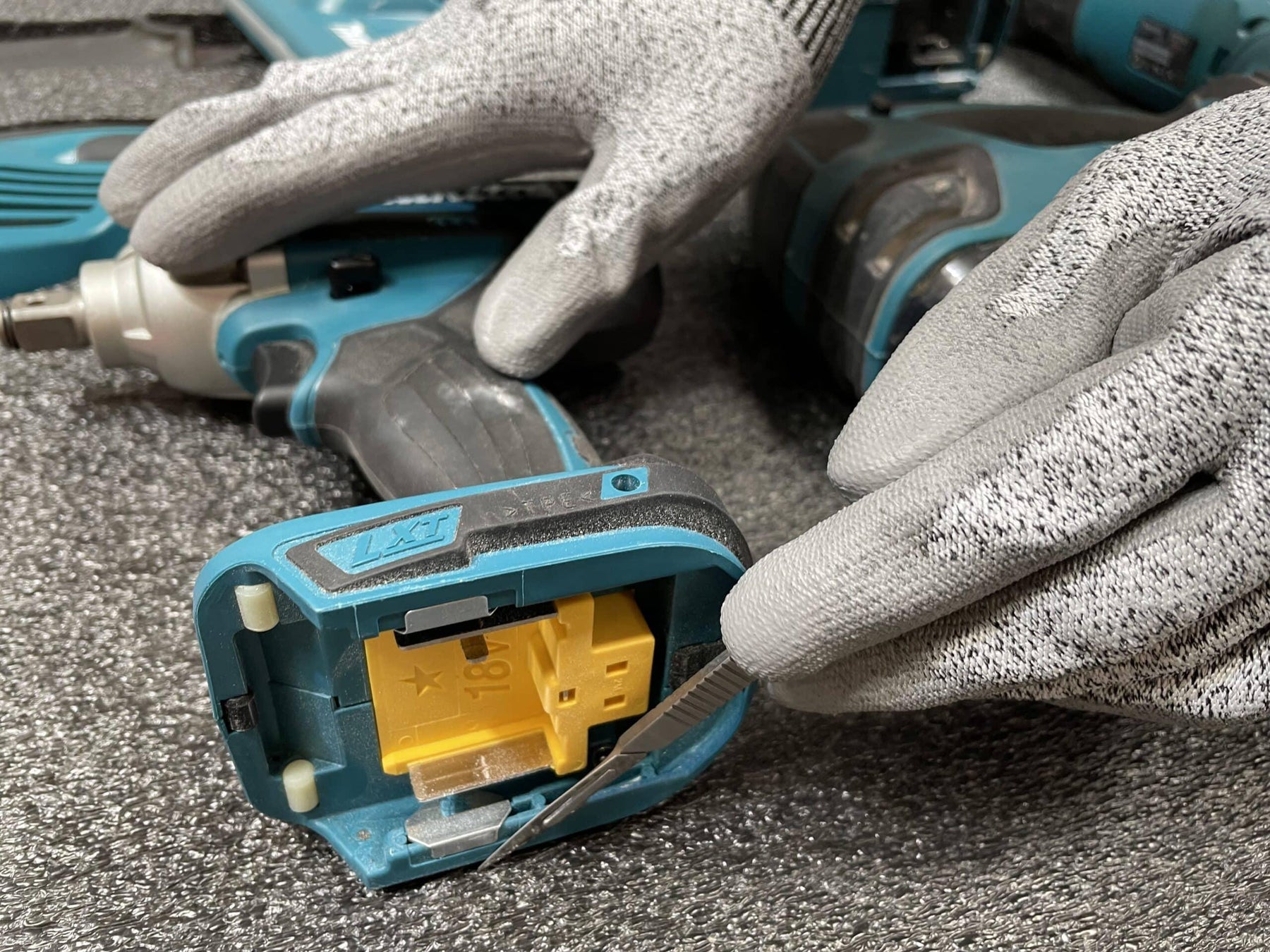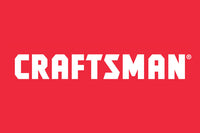Täglicher Bestellschluss um 14:00 Uhr

Ein Leitfaden zum Schattenformen
Wir wollten eine Liste der besten Hinweise und Tipps zusammenstellen, die wir anbieten können, um optimale Ergebnisse bei der Arbeit mit Shadow Foam zu erzielen. Shadowfoaming ist ein relativ einfacher Prozess, aber es gibt bestimmte Hinweise, die Sie verwenden können, um das beste Finish aus Ihrer Arbeit zu erzielen. Wir hoffen, dass dieser Leitfaden hilft.
Welche Schaumtiefe?

Ihre Schaumtiefe hängt von einer Reihe von Faktoren ab.. was Ihr Behälter ist und was Sie darin lagern. Wie Sie wissen, bieten wir 3 Tiefen von Schaum, 30mm, 50mm und 70mm. Normalerweise für kleinere, leichtere Werkzeuge, Handwerkzeuge etc die 30mm Tiefe ist vollkommen ausreichend. Aber wenn Sie größere, schwerere Gegenstände haben, sollten Sie etwas Tieferes in Betracht ziehen. Außerdem ist es möglich, dass Schichten auftragen der Schaum, wenn Sie etwas besonders Großes lagern müssen.

Als allgemeine Faustregel sollten Sie versuchen, eine Basis von etwa 10 mm am Boden des Schaums zu behalten. Für den 30 mm können Sie auf 20 mm kürzen, für den 50 mm auf 40 mm. Und für den 70 mm können Sie auf etwa 60 mm kürzen. Schauen Sie sich also an, was Sie im Schaum lagern, und entscheiden Sie von dort aus, welche Schaumtiefe Sie benötigen.
Probieren Sie es aus, bevor Sie kaufen
Wenn Sie unsere noch nie gesehen oder verwendet haben Werkzeugkasten-Organizer zuvor, würden wir wirklich empfehlen, es zuerst auszuprobieren. Sie können Muster bestellen Pack, meistens wird es am nächsten Tag bei Ihnen sein. Es kostet 5 £ (einschließlich kostenloser Lieferung in das Vereinigte Königreich), und Sie erhalten sogar einen Gutschein über 5 £ für Ihre erste Bestellung, sodass es Sie nichts kosten muss.
Planung
Wir sagen immer, dass dies einer der längsten Teile des Prozesses beim Shadowfoaming sein sollte. Nehmen Sie sich Zeit, um über das beste Layout für Sie nachzudenken. Sie sind derjenige, der es benutzt, also muss es auf Ihre Bedürfnisse zugeschnitten sein. Natürlich möchten Sie, dass es gut aussieht, und Ästhetik ist wichtig. Denken Sie aber auch daran, auf welche Gegenstände Sie regelmäßigeren Zugriff benötigen.
Andere Faktoren, die zu berücksichtigen sind, sind der Platzbedarf, wenn Sie viel Ausrüstung haben... vielleicht haben Sie einige Artikel, die Sie doppelt lagern möchten? Oder umgekehrt, die Zukunftssicherheit, wenn Sie denken, dass Sie in Zukunft zusätzliche Werkzeuge oder Geräte hinzufügen könnten.

Sobald Sie ein Layout haben, mit dem Sie zufrieden sind... machen Sie ein Foto davon, bevor Sie mit dem Schneiden beginnen... so werden Sie nicht vergessen, wie Sie es sich während der Arbeit vorgestellt haben.
Ausrüstung
Bitte, bitte, wir können das nicht genug betonen. Wenn Sie mit Klingen arbeiten, um Ihre Aufbewahrung zu produzieren, wie Sie es hier tun müssen, bitte tun Sie dies sicher. Wir haben eine ganze Reihe von Produkten, die Ihnen helfen sollen, genau und sicher zu arbeiten, und sie wurden speziell mit Shadowfoaming im Hinterkopf zusammengestellt. Überlegen Sie also, ob Sie alles haben, was Sie brauchen, und wenn nicht, dann geben Sie unserem Extras Besuch speichern.
Als absolutes Minimum benötigen Sie einige starke Schneidhandschuhe – diese erhalten Sie in unserem vollständige Schneidekits. Dann etwas, um den Schaum zu schneiden. Jetzt wissen wir, dass die Leute alle möglichen großartigen, scharfen Messer haben, aber wir empfehlen die Verwendung von ein Skalpell wo es möglich ist, Ihnen zu ermöglichen, ein wirklich enges Profil gegen die Artikel zu schneiden, ohne Verzerrungen durch dickere Griffe. Sie können diese in unseren Basis-Schneidepaketen, vollständigen Schneidekits erhalten und sogar zusätzliche Klingen bekommen, wenn Sie diese benötigen. Eine praktische Ergänzung zu Ihrem Kit ist unser Fantastischer elastischer Kleber. Wenn Sie neu bei Shadowfoaming sind, ist dies ein Muss, da alle Reparaturen ordentlich durchgeführt werden können und es Ihnen ermöglicht, weiterhin mit dem Schaum zu arbeiten.

Aber für alles, was Sie benötigen könnten, von Schneidematten bis zu Radienmessgeräten, ist ein Besuch bei der Extras section bevor Sie zur Kasse gehen, um Ihr Schaum zu überprüfen, um zu sehen, was sonst noch nützlich sein könnte.
Die Passform
Wenn Sie eines unserer maßgeschneiderte Einsätze, du bist auf dem richtigen Weg und kannst diesen Teil überspringen!
Aber wenn Sie Ihren eigenen Einsatz für jeden Behälter, jede Tasche, jede Schublade oder fast alles andere herstellen möchten, können wir Ihnen helfen. Sie können natürlich Shadow Foam in jeder Größe bis zu 2m x 1m bestellen, indem Sie unser Maßanfertigung service, also wenn Sie eine quadratische Schublade haben, dann passt das perfekt.
Aber was ist, wenn Sie einen ungewöhnlich geformten Behälter haben, den Sie anpassen möchten, oder Radien an den Ecken, oder wenn Sie ein Medium kaufen möchten? Blatt Shadow Foam oder ein Wertpaket und schneiden Sie es passend für sich zu? Wir haben einen Leitfaden dafür!

Es ist völlig möglich, sich eine maßgeschneiderte Schaumstoffeinlage zu erstellen, die in jeden Behälter passt – Schau hier für weitere Details, wie man das macht. Es ist nicht technisch oder anspruchsvoll, aber es ist etwas, das jeder tun kann, nur mit Materialien, die Sie zu Hause herumliegen haben. Und es ist super effektiv!
Eine besondere Notiz… Zeit und Geduld
Wenn Sie sich eines unserer YouTube-Videos Sie werden sehen, wie schnell wir durch unsere Projekte sausen. Wir sagen oft Dinge wie „das hat uns weniger als ein paar Stunden gekostet“ und das ist alles wahr. Aber wir machen das die ganze Zeit! Wir haben die Techniken und Prozesse auswendig gelernt und könnten das praktisch im Schlaf machen. Aber wenn Sie neu im Shadowfoaming sind, lohnt es sich, zu Beginn etwas mehr Zeit zu investieren, um die besten Ergebnisse zu erzielen. Die Geschwindigkeit und Leichtigkeit werden mit der Zeit absolut kommen, aber wie bei allem braucht es zunächst eine kurze Eingewöhnungszeit.
Aber es ist wirklich nicht schwierig, das kann jeder tun, fast überall, da dieses Beispiel illustrates.
Wir alle kennen das alte Sprichwort: „Zweimal messen, einmal schneiden“ und das gilt auch hier. Mit Geduld und einem methodischen Ansatz, der unseren besten Praktiken und Tutorials folgt, werden auch Sie im Handumdrehen Ihre Werkzeugorganisation meistern.
Schneiden
Es ist kein Zufall, dass wir in den meisten unserer YouTube-Videos. Es ist ein wirklich wichtiger Teil des Prozesses. Wenn Sie noch nie mit Shadow Foam gearbeitet haben, schauen Sie sich das unbedingt an Wie man Anleitung too.

- Halten Sie den Artikel mit einer Hand an Ort und Stelle.
- Halten Sie mit der anderen Hand das Skalpell wie einen Bleistift und schneiden Sie rund um den Gegenstand.
(d.h. nicht bis ganz nach unten schneiden, nur so viel, dass Sie die Silhouette des Artikels sehen können) - Entfernen Sie den Artikel und gehen Sie über Ihren Schnitt zurück, indem Sie bis zur gewünschten Tiefe im Schaumstoff schneiden.
(Sie können die Länge der Klinge als visuelle Referenz für diese Tiefe verwenden, und wenn Sie beginnen, die Schicht abzuziehen, können Sie auch die Schichten, die Sie im Schaum sehen, als Leitfaden verwenden.) - Es ist wichtig, dass Sie tief genug geschnitten haben, damit die Basis des Artikels dort sitzt, wo Sie es möchten. Stellen Sie also sicher, dass die Spitze Ihrer Klinge so weit reicht oder sogar ein wenig weiter, als Sie möchten, dass die Basis ist.
(obwohl Sie immer wieder hineingehen und nach dem Abziehen einer oder zweier Schichten schneiden können, um sicherzugehen)
Peeling
Jetzt ist dies absolut entscheidend dafür, wie gut Ihr Projekt gelingt, wie gut das Ergebnis aussieht und wie einfach Sie den Prozess empfinden. Diese Technik wird Sie in kürzester Zeit vom Anfänger zum Experten machen, und wir empfehlen wirklich jedem, sich vor dem Start des Shadowfoamings über diesen Prozess zu informieren!

- Drücken Sie Ihren Finger/Ihre Finger an einem Ende des Profils des geschnittenen Artikels in den Schaum.
- Fahre weiterhin mit deinem Finger/deinen Fingern durch den Schaum, sodass du hörst, wie er sich trennt, wo du deine Finger hindurchdrückst.
(Lass dich nicht verleiten, zu halten und zu schälen, als würdest du eine Banane schälen, wie auf dem Foto. Es wird einfach abbrechen und du musst es erneut versuchen. Das erfordert ein wenig Kraft und Mühe und ist absichtlich so, dass der Schaum stark genug ist, um im Laufe der Zeit nicht auseinanderzufallen.) - Sie möchten vielleicht Schichten nach und nach abziehen, das ist in Ordnung. Sobald Sie eine Schicht entfernt haben, gehen Sie zurück und machen Sie dasselbe erneut.
- Die 10 mm dicken laminierten Schichtpunkte, die Sie im Schaumstoff sehen können, sind die schwierigsten Punkte zum Abziehen. Für die besten Ergebnisse versuchen Sie, an einem der anderen Punkte darüber und darunter abzuziehen.
Feinschliff
Testanpassung
Wenn Sie Ihr Werkzeug in den Schaumstoff einsetzen, sollte es eine super enge Passform haben. Wenn es jedoch etwas zusätzliches Schneiden rund um oder in den Schaumstoff benötigt, um gut oder flach zu sitzen, ist dies ein guter Zeitpunkt, um es erneut zu bearbeiten. Einige Artikel mit unebenen Basen erfordern in einigen Bereichen etwas mehr Schneiden als in anderen.
Die Basis abflachen
Wir werden oft gefragt, wie man eine flachere Basis in seinem ausgeschnittenen Bereich erreichen kann. Das liegt teilweise daran, die beste Abziehtechnik anzuwenden, wie wir oben empfehlen. Aber natürlich ist das Schaumstoff, und das Material ist von Natur aus uneben. Machen Sie sich also nicht zu viele Sorgen, wenn die Basis Ihres abgezogenen Bereichs nicht ganz flach ist.
Aber wenn Sie wie wir Perfektionisten sind, gibt es Möglichkeiten, ein so flaches Ergebnis wie möglich zu erzielen. Beim Schneiden von Hand kann dies erreicht werden, indem man über alle "Unebenheiten" zurückgeht, sie mit der horizontal zu ihnen positionierten Skalpellklinge abträgt und sie einfach abhebt.
Wir haben jetzt auch eine ganze Reihe von Schaumglättungswerkzeuge und Techniken, die wir mit Ihnen teilen können. Schauen Sie sich also die Glättungsoptionen an hier!
Anpassung
Vielleicht haben Sie gesehen, dass wir oft unser Logo in unsere Produkte schneiden, aber viele andere Menschen haben es geschafft, dasselbe zu tun, indem sie Branding, Logos, Namen oder Initialen zu ihren Schaumstoff-Organisatoren hinzufügen. Wie Sie aus dieser Auswahl unten sehen werden, kann das sehr effektiv aussehen.
Alle Schaumstoffzuschnitte, die wir machen, erfolgen von Hand, und auch diese wurden auf die gleiche Weise hergestellt, sodass Sie wirklich großartige Ergebnisse erzielen können. Hier Sie können uns dabei zusehen, wie wir eine unserer eigenen Werkzeugwände personalisieren, damit Sie dasselbe nachahmen und ausprobieren können.

Kontakt aufnehmen
Wir hoffen, dass dieser Leitfaden und alle Video-Links Ihnen bei Ihrer Mission zur Erreichung von organisierter Perfektion helfen! Wenn es jedoch noch etwas gibt, bei dem wir Ihnen helfen können, zögern Sie wie immer nicht, uns zu kontaktieren. Kontakt aufnehmen.



















 Kostenloses Schneideset bei qualifizierten Bestellungen
Kostenloses Schneideset bei qualifizierten Bestellungen
 Über 4.000 positive Bewertungen
Über 4.000 positive Bewertungen
 Mehr als 500 Videos auf YouTube
Mehr als 500 Videos auf YouTube
 Unterstützung in Großbritannien
Unterstützung in Großbritannien